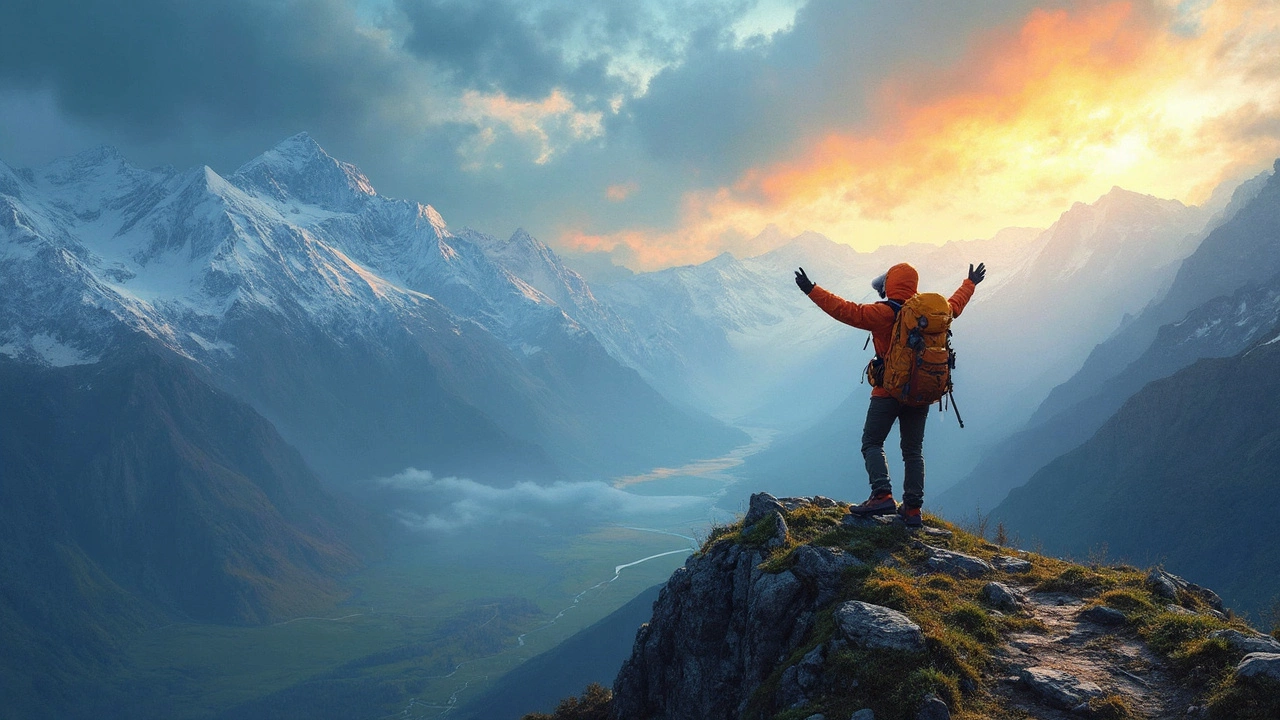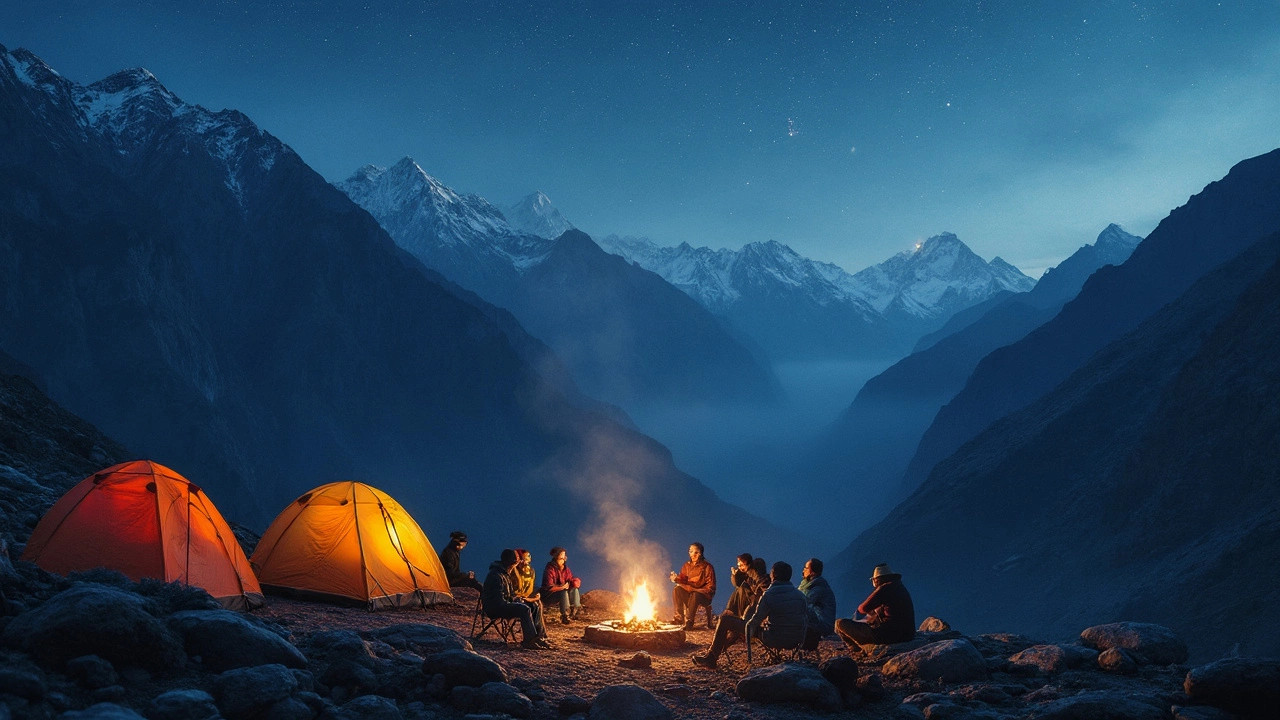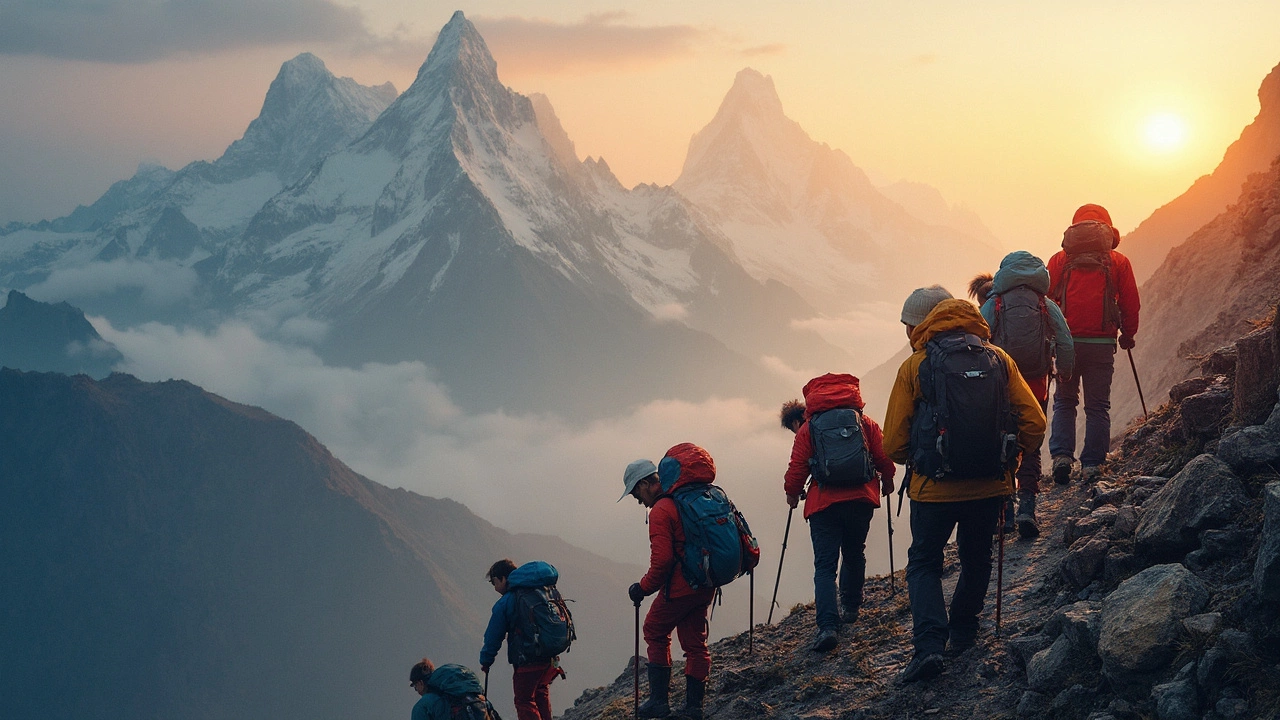The Goecha La trek in Sikkim isn't just another adventure — it’s the ultimate challenge for trekkers craving serious high-altitude thrills. Nestled in the lap of the majestic Kanchenjunga, this trek is a stairway to heaven that's as rewarding as it is demanding. Are you game for the challenge?
The climb is no joke, with altitudes soaring over 4,900 meters and landscapes ready to take your breath away — literally. Tempted? Well, get ready to face dramatic shifts in weather, steep climbs, and sometimes slippery trails that test your endurance. It's these very elements that make Goecha La the trekster's dream.
Before you pack those boots, there's plenty to prepare for. Gear up with the right equipment, and don't skim on the fitness preparation. Navigation tips, layered clothing, and acclimatization plans are not just good-to-haves; they’re your lifeline on this trail. The rewards? Unobstructed views of the Kanchenjunga and the surreal experience of standing amongst cloud-kissed peaks.
- Introduction to Goecha La
- Why is it considered tough?
- Preparation and gear
- What to expect on the trail
- Tips for a successful trek
Introduction to Goecha La
If you’re ready to dive into a real mountaineering adventure, the Goecha La trek in India offers a tantalizing test of grit and stamina. Nestled in the mystical state of Sikkim, Goecha La provides not just a hiking path but an otherworldly journey through some of the most awe-inspiring landscapes on Earth.
This trek, which stretches roughly 90 km, takes you through lush rhododendron forests, breath-taking high-altitude meadows, and striking snow-clad peaks. As you ascend, the scenery shifts dramatically, giving you a chance to experience a variety of ecosystems firsthand. It's the kind of place where one minute you’re traipsing through dense jungle and the next, you’re gawping at barren high-altitude desert landscapes.
Trekking India is about more than just sights. It's a piece of local culture, too. The villages around here are steeped in traditions, and visitors often get a taste of the vibrant Sikkimese way of life at the small homestays. You might even pick up a few words of the local dialect, if you’re lucky!
You'll start your journey from the little town of Yuksom. Historically, Yuksom is significant as it was the first capital of Sikkim, and it’s from here that most trekkers kick off their adventure towards the majestic Kanchenjunga, the world’s third highest mountain. And by trekker standards, reaching the highest point at Dzongri and Goecha La offers a level of exhilaration you won’t find elsewhere.
Of course, like any high-altitude trek, it's essential to give yourself time to acclimatize. Ascending too quickly, without proper adjustment, can lead to altitude sickness, which is no fun at all.
Curious to know where you might rest your tired legs at the end of the day? Several trekking lodges and campsites are peppered along the route. While they may be basic, they provide a safe haven and a chance to meet fellow adventurers from around the world.
Why is it considered tough?
No one said tackling the Goecha La trek would be a walk in the park. This isn’t your everyday stroll and there’s a good reason it's tagged as a monster of a trek in India. Let's dig into what makes it so hardcore.
Altitude Challenges
The trek takes you up to a dizzying 4,900 meters (that’s over 16,000 feet!). The air's thin up here, making every step feel like a marathon. Altitude sickness is a real thing, and it's not picky about who it affects. You have to be super cautious and take it slow to properly acclimatize.
Changeable Weather
Now, let's talk about the notorious weather. At these heights, expect the unexpected — sunshine, heavy rains, snow. You could start your day under a clear sky and end it battling through rain-soaked terrain. Layering up is key, as temperatures can swing dramatically.
Rugged Terrain
The tracks vary from gentle inclines to steep, pulse-jacking ascents. There’s also no shortage of rocky patches and narrow trails that demand sure-footedness and concentration. If you’re not watching your step, a stumble could mean trouble.
Physical Endurance
This isn't a place for the casual trekker. You'll be covering around 90 km over 10 days. The long days will test your stamina, with daily treks of 8 to 10 hours. Packing light but right becomes a survival skill here.
Seasonal Factors
While April to June and September to November are generally considered the best times, you’re not completely free of risks even during these seasons. Unpredictable weather patterns and trekking conditions make it vital to be always prepared.
Putting it all together, it's obvious why many consider trekking to Goecha La as the ultimate adventure. If conquering extreme conditions is your thing, this journey is waiting for you. Just remember, preparation is your best friend.

Preparation and Gear
Tackling the Goecha La trek is not just about strong legs; it's about meticulous planning and having the right gear to deal with unpredictable conditions. Here’s how to nail your prep and pack like a pro.
Fitness First
Building your stamina is crucial. Start with cardio workouts like running or cycling at least a couple of months before your trek. Don't forget to mix in strength training for those steep ascents. After all, it's not just your legs doing the heavy lifting — your core and upper body play significant roles too.
Essential Gear Checklist
Your backpack will be your best friend, so make sure it contains these must-haves:
- Trekking boots: Go for waterproof, durable, and well-broken-in boots. Your feet will thank you later.
- Warm clothing: The weather is unpredictable. Think layers — thermal wear, a down jacket, and windproof rain gear.
- Backpack: Choose one with comfortable shoulder straps and a rain cover. A 50-70 liter capacity is ideal.
- Sleeping bag: Necessary for chilly nights. Opt for something rated for at least -10°C.
- Headlamp: Vital for early starts or late finishes.
- Other essentials: Basic first aid kit, water purification tablets, sunscreen, and trekking poles.
Acclimatization Tips
Gaining altitude is no joke. To avoid the dreaded altitude sickness, stay hydrated and take it slow. Schedule acclimatization days and be mindful of any symptoms of altitude sickness.
Getting all this right not only enhances the thrill of your trekking in India adventure but also ensures you're safe and ready for any curveballs the mighty Himalayas throw at you.
What to Expect on the Trail
Embarking on the Goecha La trek means stepping into an adventurous journey peppered with challenges and breathtaking sights. This epic trek spans over 90 kilometers and usually takes about 10 days to complete, so it’s not for the faint-hearted or the underprepared.
The Terrain
The trail begins in lush alpine forests, buzzing with the sounds of nature, and gradually transitions to the sparse, high-altitude landscapes that test your mental and physical mettle. Expect steep ascents, knee-jarring descents, and some slippery patches where rivers occasionally cross your path. Each step brings you closer to those panoramic views of snow-laden peaks.
Weather Conditions
The weather can be unpredictable, with sunny mountain mornings turning into cloudy afternoons packed with sudden chills. Temperatures at night can drop significantly, touching below freezing at higher camps. Keeping a close watch on the weather forecast is crucial as it helps plan safer and more comfortable travel.
Altitude Sickness
With altitudes reaching up to 4,900 meters, be prepared to combat altitude sickness. Symptoms might include headaches, dizziness, or shortness of breath. Take your time, allow your body to adjust, and stay hydrated. Acclimatization is key.
Gear Essentials
Don’t skimp on your packing list. Essential gear includes robust trekking boots, layered clothing for flexibility, a sturdy tent, and sleeping gear suited for cold temperatures. Walking poles can also be game-changers on steep climbs and unstable ground.
Wildlife and Flora
The trek is a feast for nature lovers. Keep your eyes peeled for exotic wildlife like the red panda or brightly colored pheasants — they’re real treasures of the trekking India experience.
Feeling adventurous yet? Preparing for the unexpected and staying resilient can turn this tough trek into a story worth telling. Remember, it’s the challenges along the way that make reaching the summit more remarkable.

Tips for a Successful Trek
When tackling the daring Goecha La trek in India, having a game plan can make all the difference. Let's chat about some key tips to ensure your trek is as smooth as the Kanchenjunga's snowy slopes.
Prep Your Body and Mind
Training for the trek is non-negotiable. Start with cardio exercises like running or cycling and mix in strength training. You want those legs solid for the steep climbs. Mentally, embrace the challenge! Knowing that parts will be tough but rewarding can keep you motivated.
Gear and Packing
Now, let's talk gear. Besides the essentials like a sturdy pair of waterproof trekking boots and a well-fitted backpack, pack wisely. Here's a small pack list to jumpstart you:
- Thermal wear for chilly nights
- Waterproof jacket for unpredictable weather
- Sunscreen and sunglasses for daytime glare
- First aid kit with altitude sickness meds
- High-carb snacks for quick energy
Consider investing in a lightweight tent if you prefer flexibility over shared accommodations on the trail.
Technical Know-How
Knowledge about the terrain, weather patterns, and altitude can be a life-saver. Spend time acclimatizing to avoid the risks of altitude sickness. Spend a night or two in Yuksom before you start. Stick to your guide’s pace, not your ego's!
Staying Safe
The buddy system isn't just for camp. Trek with companions or guides who know these trails like the backs of their hands. If you decide to trek solo, let someone know your plans.
All About the Experience
Get the most out of these majestic trails by soaking in the serene surroundings. Keep a journal or take photos to capture not just the views, but how they made you feel.
| Distance (km) | Days | Elevation Gain (m) |
|---|---|---|
| 90 | 10-11 | 4,900 |
Bring home more than just photos — log memories, learnings, and a sense of strength from conquering one of the most challenging treks in India.
